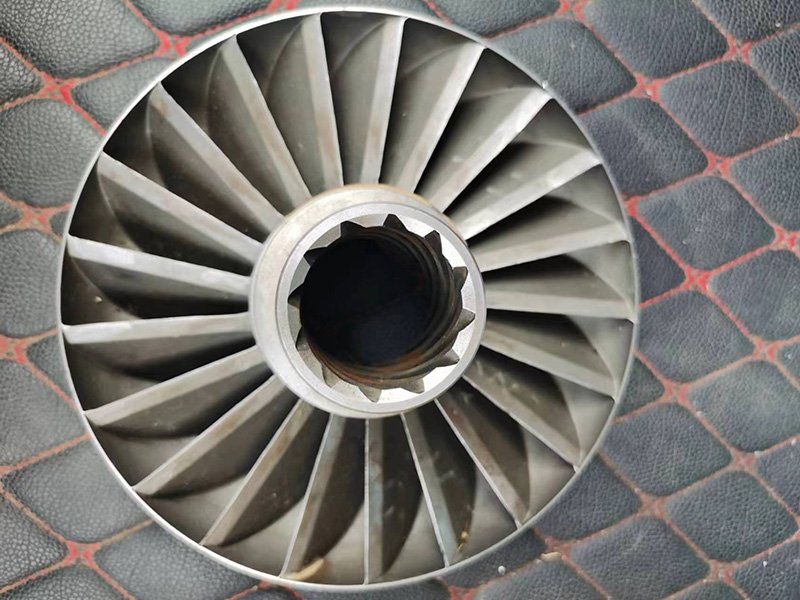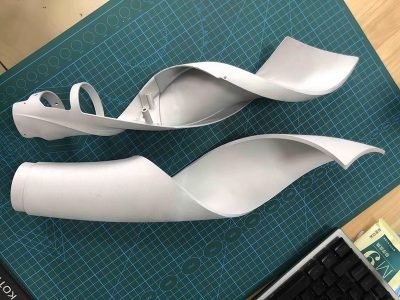customized stainless steel investment casting parts

1. Introduction to Investment Casting
Investment casting, also known as precision casting, is a metal casting process that involves the use of ceramic molds to produce complex metal parts with high accuracy and surface finish. This casting process has been widely used in various industries, such as aerospace, automotive, medical, and mechanical engineering. In this article, we will focus on the customized stainless steel investment casting parts, which are particularly popular in the market due to their excellent performance and wide application range.
2. Materials Used in Customized Stainless Steel Investment Casting Parts
Stainless steel is a versatile material known for its corrosion resistance, high strength, and excellent heat resistance. It is widely used in various industries due to its superior properties. In the field of investment casting, stainless steel is the primary material used to produce customized parts. There are several types of stainless steel, such as 304, 316, 321, and 347, each with its own unique properties and applications.
2.1 Type 304 Stainless Steel
Type 304 stainless steel is the most commonly used stainless steel in the investment casting process. It has excellent corrosion resistance, heat resistance, and weldability. This material is suitable for applications where high strength and corrosion resistance are required, such as kitchenware, food processing equipment, and general engineering components.
2.2 Type 316 Stainless Steel
Type 316 stainless steel is an improved version of type 304, with better corrosion resistance, especially in chloride environments. It is commonly used in marine applications, chemical processing equipment, and medical devices. The addition of molybdenum to type 316 makes it more resistant to pitting and crevice corrosion.
2.3 Type 321 Stainless Steel
Type 321 stainless steel is a precipitation-hardening stainless steel with excellent strength and stability at high temperatures. It is often used in aerospace applications, such as turbine blades and engine components, due to its excellent heat resistance and strength.
2.4 Type 347 Stainless Steel
Type 347 stainless steel is a high-temperature alloy with excellent thermal stability and oxidation resistance. It is commonly used in high-temperature applications, such as heat exchangers, valves, and furnace parts.
3. The Investment Casting Process
The investment casting process consists of several steps, including pattern making, ceramic mold preparation, wax pattern assembly, shell making, melt preparation, casting, and post-processing.
3.1 Pattern Making
Pattern making is the first step in the investment casting process. A pattern is a replica of the final part, typically made from wood, metal, or plastic. The pattern is used to create the ceramic mold, which will eventually be used to cast the part.
3.2 Ceramic Mold Preparation
Once the pattern is created, it is coated with a refractory material to form a ceramic shell. The shell is then heated to remove the wax pattern, leaving a hollow ceramic mold. This process is known as shell making.
3.3 Wax Pattern Assembly
The wax pattern is assembled to form the desired part. The assembly is then dipped into a slurry, which consists of a ceramic slurry and a binder. The slurry hardens around the wax pattern, forming a shell.
3.4 Shell Making
The shell is heated to remove the wax, leaving a hollow ceramic mold. This process is repeated multiple times to build up the shell thickness.
3.5 Melt Preparation
The molten metal is prepared by melting the stainless steel in a furnace. The molten metal is then poured into the ceramic mold.
3.6 Casting
The molten metal fills the hollow ceramic mold, taking the shape of the wax pattern. Once the metal solidifies, the ceramic shell is broken away, revealing the cast part.
3.7 Post-Processing
The cast part is then subjected to various post-processing operations, such as heat treatment, grinding, and surface finishing, to achieve the desired dimensions and surface finish.
4. Advantages of Customized Stainless Steel Investment Casting Parts
4.1 High Accuracy and Surface Finish
Investment casting allows for the production of parts with high accuracy and surface finish. This is due to the precision of the ceramic mold and the tight tolerances maintained during the casting process.
4.2 Complex Geometries
The investment casting process can produce parts with complex geometries, including intricate shapes and thin walls, which are difficult to achieve using other casting methods.
4.3 Reduced Material Waste
Investment casting is a highly efficient process that minimizes material waste. The ceramic mold is reusable, which reduces the need for additional materials and labor.
4.4 Shorter Production Time
The investment casting process can produce parts in a shorter time compared to other casting methods, such as sand casting or die casting. This is due to the high precision and efficiency of the process.
5. Applications of Customized Stainless Steel Investment Casting Parts
Customized stainless steel investment casting parts are widely used in various industries due to their excellent properties and versatility. Some of the common applications include:
5.1 Aerospace Industry
The aerospace industry utilizes customized stainless steel investment casting parts for turbine blades, engine components, and other critical components due to their high strength and heat resistance.
5.2 Automotive Industry
Customized stainless steel investment casting parts are used in the automotive industry for engine components, exhaust systems, and other high-performance parts.
5.3 Medical Industry
The medical industry utilizes customized stainless steel investment casting parts for surgical instruments, implants, and other medical devices due to their biocompatibility and corrosion resistance.
5.4 Mechanical Engineering
Customized stainless steel investment casting parts are used in mechanical engineering for various applications, such as valves, pumps, and other mechanical components.
Frequently Asked Questions (FAQs)
1. What is the difference between investment casting and other casting methods?
Investment casting involves the use of ceramic molds, which allows for the production of parts with high accuracy and surface finish. Other casting methods, such as sand casting or die casting, use different molds and materials, which may result in lower accuracy and surface finish.
2. What are the advantages of using stainless steel in investment casting?
Stainless steel offers excellent corrosion resistance, high strength, and heat resistance, making it an ideal material for investment casting. These properties ensure that the cast parts can withstand harsh environments and maintain their integrity over time.
3. How does the investment casting process work?
The investment casting process involves pattern making, ceramic mold preparation, wax pattern assembly, shell making, melt preparation, casting, and post-processing. Each step is crucial to the success of the casting process.
4. What are the advantages of using customized stainless steel investment casting parts?
Customized stainless steel investment casting parts offer high accuracy, complex geometries, reduced material waste, and shorter production time compared to other casting methods.
5. What industries use customized stainless steel investment casting parts?
Customized stainless steel investment casting parts are widely used in the aerospace, automotive, medical, and mechanical engineering industries due to their excellent properties and versatility.
